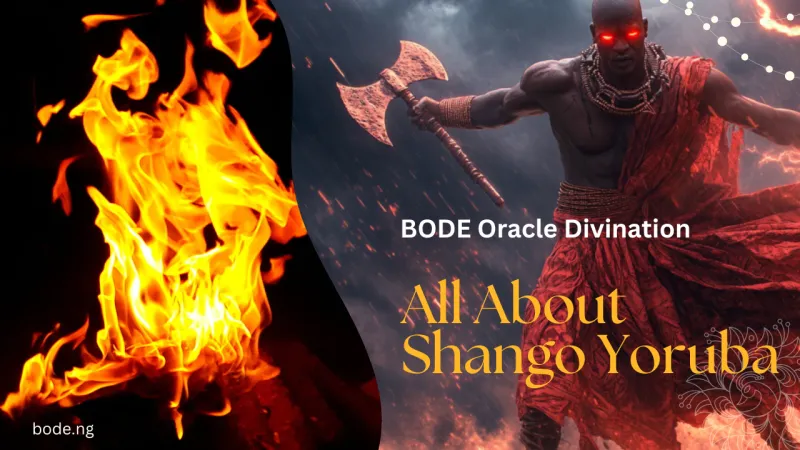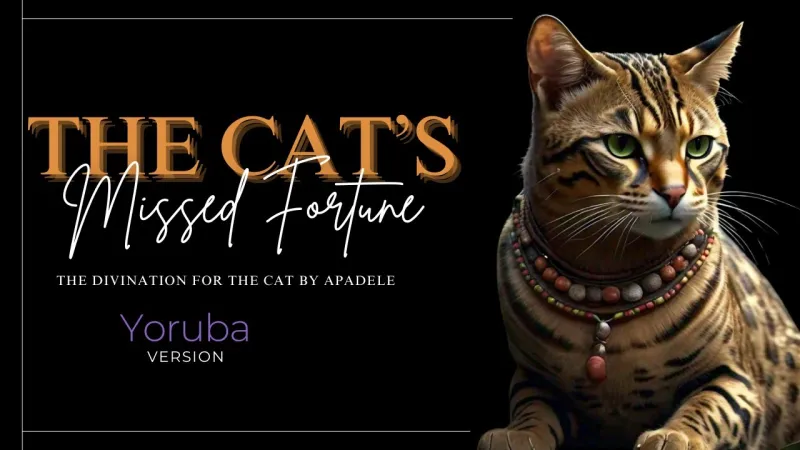Shango (Yoruba: Ṣàngó), also known as Changó or Xangô in Latin America, Jakuta or Badé, and Ṣangó in Trinidad Orisha traditions, is an Orisha (spirit) in Yoruba religion.
Historically, Shango is regarded as a royal ancestor of the Yoruba people, having served as the third Alaafin of the Oyo Kingdom before being deified after his death.
Shango is associated with several manifestations, including Airá, Agodo, Afonja, Lubé, and Obomin, and is renowned for wielding a powerful double axe known as Oṣè.
He is celebrated as one of the most formidable rulers in the history of Yorubaland and is a major deity in the Yoruba religion of southwestern Nigeria.
Shango is also venerated in the religion of the Edo people of southeastern Nigeria, where he is known as Esango, and among the Fon people of Benin, who refer to him as Sogbo or Ebioso.
Like all Yoruba Orishas, Shango embodies both a deified ancestor and a natural force, each tied to a dedicated cult and priesthood. Historically, Shango was the fourth king of Oyo.
READ MORE
Yoruba Names For Boys And Their Meaning
Who Is The Most Powerful Yoruba King?
Yoruba Girl Names And Their Meaning
Oral traditions describe him as a formidable leader with a thunderous voice and the ability to breathe fire when he spoke. However, his reign faced challenges when a subordinate chief impressed the townspeople with magical feats, causing many to abandon Shango.
Shango, disgraced and defeated in the eyes of his people, left Oyo and took his own life by hanging. Yet, his loyal followers proclaimed that he ascended to the heavens on a chain, transforming into an Orisha rather than meeting death.
Over time, Shango absorbed attributes of the preexisting deity Jakuta, a representation of divine wrath, whose name remains linked to Shango in Cuba.
The Shango practice eventually integrated into Oyo's religious and political systems, becoming a crucial part of the king's installation rites.
As the Oyo Empire expanded, dominating other Yoruba kingdoms as well as the Edo and Fon peoples, Shango worship spread widely. Even after Oyo’s influence waned, both the Edo and Fon continued to uphold Shango’s within their religious traditions.
See More Trending Post
Yoruba Alphabet And Pronunciation
Yoruba Mythology Deities And Orisa
Ifa Yoruba A Global Spiritual Practice
Orisha of Justice and Protection
Shango is associated with the natural forces of fire and lightning. His most notable ritual symbol is the oshe, a double-headed battle-axe, often depicted emerging from the top of his head in statues, symbolizing his role as a warrior and slayer of enemies.
The oshe also features prominently in rituals performed by Shango’s priesthood, who either hold it close to their chests for protection or swing it in wide arcs during ceremonial dances.
During his reign, Shango designated the bata drum as his preferred instrument, believed to summon storms when played. These drums remain a significant part of his worship, used by devotees to invoke his power. In the 18th and 19th centuries, the transatlantic slave trade forcibly relocated thousands of Yoruba, Bini, and Fon people to the Americas.
Despite this displacement, African slaves and their descendants reestablished Shango’s worship in various parts of the Caribbean and South America. By the early 21st century, Shango was venerated in Haiti’s Vodou religion, Cuba’s Santería tradition, and Brazil’s Candomblé.
People Also Read
Yoruba Tribal Markings And Cultural Significance
New religious movements, such as Trinidad Shango (also known as Shango Baptists) and Brazil's Xangô, particularly prominent in Recife, also honor him. Shango’s power is sometimes compared to the libidinal drive, with interpretations suggesting it represents a warning against the misuse of military or political power.
However, such comparisons risk reinforcing racial stereotypes of African male sexual prowess. Those who follow Shango’s path, often referred to as his "children," are believed to embody his traits, such as high energy, strength, boldness, and a commanding presence.
They are known for their passionate nature, protective instincts, and loyalty. While they may have quick tempers and be prone to anger, they fiercely defend their loved ones, particularly their children, with unwavering dedication.



